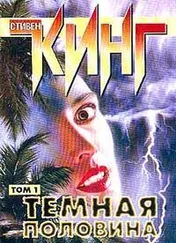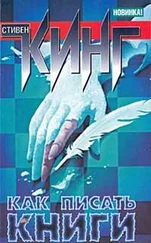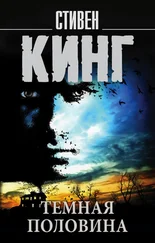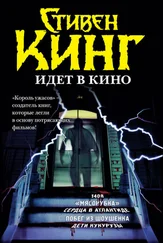We sat there looking around, blinking in the light like moles.
The manager walked out into the middle of the stage and held his hands up-quite unnecessarily-for quiet. Six years later, in 1963, I flashed on that moment when, one Friday afternoon in November, the guy who drove us home from school told us that the President had been shot in Dallas.
2
If there is any truth or worth to the danse macabre, it is simply that novels, movies, TV and radio programs-even the comic books-dealing with horror always do their work on two levels.
On top is the "gross-out" level-when Regan vomits in the priest's face or masturbates with a crucifix in The Exorcist , or when the rawlooking, terribly inside-out monster in John Frankenheimer's Prophecy crunches off the helicopter pilot's head like a Tootsie-Pop. The gross-out can be done with varying degrees of artistic finesse, but it's always there.
But on another, more potent level, the work of horror really is a dance-a moving, rhythmic search.
And what it's looking for is the place where you, the viewer or the reader, live at your most primitive level. The work of horror is not interested in the civilized furniture of our lives. Such a work dances through these rooms which we have fitted out one piece at a time, each piece expressing-we hope!-our socially acceptable and pleasantly enlightened character. It is in search of another place, a room which may sometimes resemble the secret den of a Victorian gentleman, sometimes the torture chamber of the Spanish Inquisition . . . but perhaps most frequently and most successfully, the simple and brutally plain hole of a Stone Age cave-dweller.
Is horror art? On this second level, the work of horror can be nothing else; it achieves the level of art simply because it is looking for something beyond art, something that predates art: it is looking for what I would call phobic pressure points. The good horror tale will dance its way to the center of your life and find the secret door to the room you believed no one but you knew of-as both Albert Camus and Billy Joel have pointed out, The Stranger makes us nervous . . . but we love to try on his face in secret.
Do spiders give you the horrors? Fine. We'll have spiders, as in Tarantula, The Incredible Shrinking Man , and Kingdom of the, Spiders . What about rats? In James Herbert's novel of the same name, you can feel them crawl all over you . . . and eat you alive. How about snakes? That shut-in feeling?
Heights? Or . . . whatever there is.
Because books and movies are mass media, the field of horror has often been able to do better than even these personal fears over the last thirty years. During that period (and to a lesser degree, in the seventy or so years preceding), the horror genre has often been able to find national phobic pressure points, and those books and films which have been the most successful almost always seem to play upon and express fears which exist across a wide spectrum of people. Such fears, which are often political, economic, and psychological rather than supernatural, give the best work of horror a pleasing allegorical feel-and it's the one sort of allegory that most filmmakers seem at home with. Maybe because they know that if the shit starts getting too thick, they can always bring the monster shambling out of the darkness again.
We're going back to Stratford in 1957 before much longer, but before we do, let me suggest that one of the films of the last thirty years to find a pressure point with great accuracy was Don Siegel's Invasion of the Body Snatchers . Further along, we'll discuss the novel-and Jack Finney, the author, will also have a few things to say-but for now, let's look briefly at the film.
There is nothing really physically horrible in the Siegel version of Invasion of the Body Snatchers ; *
no gnarled and evil star travelers here, no twisted, mutated shape under the facade of normality. The pod people are just a little different, that's all. A little vague. A little messy. Although Finney never puts this fine a point on it in his book, he certainly suggests that the most horrible thing about "them" is that they lack even the most common and easily attainable sense of aesthetics. Never mind, Finney suggests, that these usurping aliens from outer space can't appreciate La Traviata or Moby Dick or even a good Norman Rockwell cover on the Saturday Evening Post . That's bad enough, but-my God!-they don't mow their lawns or replace the pane of garage glass that got broken when the kid down the street batted a baseball through it. They don't repaint their houses when they get flaky. The roads leading into Santa Mira, we're told, are so full of potholes and washouts that pretty soon the salesmen who service the town-who aerate its municipal lungs with the life-giving atmosphere of capitalism, you might say-will soon no longer bother to come.
*There is in the Philip Kaufman remake, though. There is a moment in that film which is repulsively horrible. It comes when Donald Sutherland uses a rake to smash in the face of a mostly formed pod. This "person's" face breaks in with sickening ease, like a rotted piece of fruit, and lets out an explosion of the most realistic stage blood that I have ever seen in a color film. When that moment came I winced, clapped a hand over my mouth . . and wondered how in the hell the movie had ever gotten its PG rating.
The gross-out level is one thing, but it is on that second level of horror that we often experience that low sense of anxiety which we call "the creeps." Over the years, Invasion of the Body Snatchers has given a lot of people the creeps, and all sorts of high-flown ideas have been imputed to Siegel's film version. It was seen as an anti-McCarthy film until someone pointed out the fact that Don Siegel's political views could hardly be called leftish. Then people began seeing it as a "better dead than Red” picture. Of the two ideas, I think that second one better fits the film that Siegel made, the picture that ends with Kevin McCarthy in the middle of a freeway, screaming "They're coming! They're coming" to cars which rush heedlessly by him. But in my heart, I don't really believe that Siegel was wearing a political hat at all when he made the movie (and you will see later that Jack Finney has never believed it, either); I believe he was simply having fun and that the undertones . . . just happened.
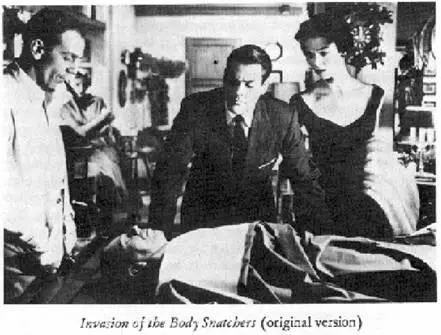
This doesn't invalidate the idea that there is an allegorical element in Invasion of the Body Snatchers ; it is simply to suggest that sometimes these pressure points, these terminals of fear, are so deeply buried and yet so vital that we may tap them like artesian wells-saying one thing out loud while we express something else in a whisper.
The Philip Kaufman version of Finney's novel is fun (although, to be fair, not quite as much fun as Siegel's ) , but that whisper has changed into something entirely different: the subtext of Kaufman's picture seems to satirize the whole I'm-okay-you're-okay-so-let's-get-in-the-hot-tub-and-massage-our-precious-consciousness movement of the egocentric seventies. Which is to suggest that, although the uneasy dreams of the mass subconscious may change from decade to decade, the pipeline into that well of dreams remains constant and vital.
This is the real danse macabre, I suspect: those remarkable moments when the creator of a horror story is able to unite the conscious and subconscious mind with one potent idea. I believe it happened to a greater degree with the Siegel version of Invasion of the Body Snatchers , but of course both Siegel and Kaufman were able to proceed courtesy of Jack Finney, who sank the original well.
Читать дальше



